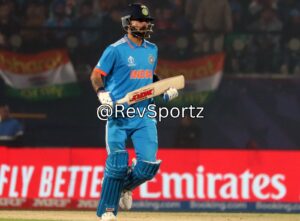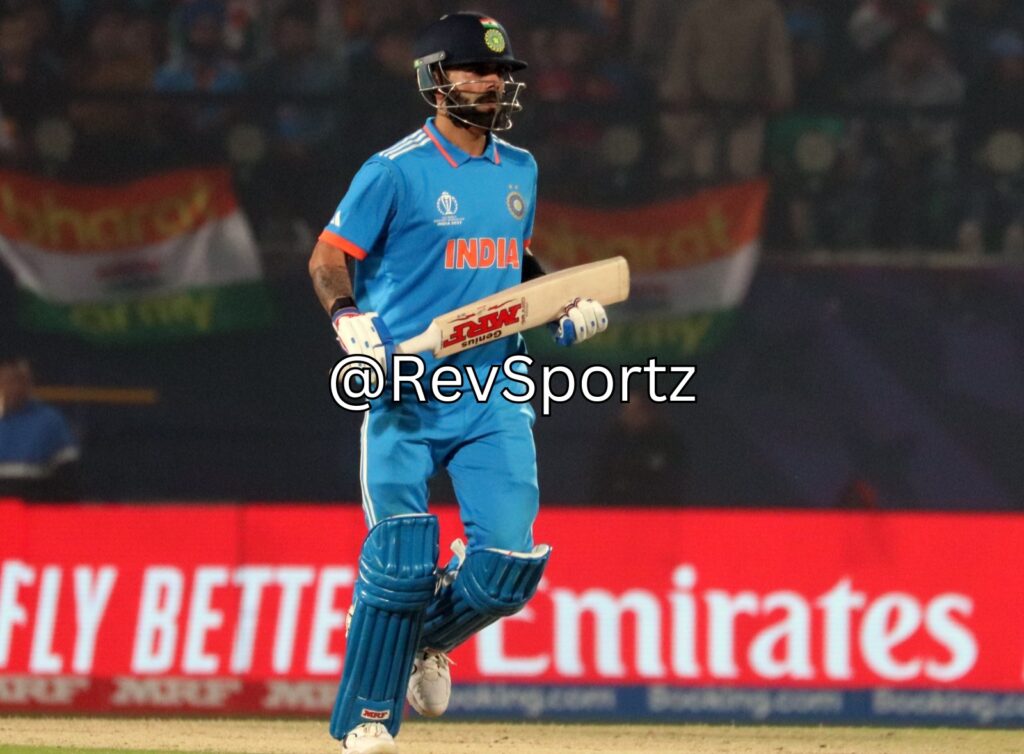
Cricketers are portrayed as icons, role models and superstars, whose net assets run into the millions. All that is nice to read but if we try and go behind the scenes to understand the persona, more fascinating facts would emerge.
Ask any cricket fan to write a quick social media post on Virat Kohli, and he or she could type out at least 300 words in less than 15 minutes. That is the kind of presence that Kohli, called Cheeku in Delhi cricket circles, has in our hearts.
As the West Delhi-born rock star of Indian cricket turns 35 on November 5, a deep dive into his younger days, especially as a teenager, is worthwhile. This piece is attempt to find out who Kohli was as a young boy. Everyone knows what Kohli does today in cricket, be it with his bat, as a teammate, or as the bearded dude who glares at rivals. He has also made the tattoo business in India mainstream.
Yet, King Kohli was a commoner in Delhi cricket circles around two decades ago. This writer spoke to many former coaches, ex-cricketers and even officials. One official who had been part of the DDCA set-up for over 15 years came up with the most startling story of how Kohli “used to be ignored” in those early years.
That shouldn’t shock you. We have read about this in the past, as well, but one former DDCA official, who preferred to remain anonymous, spoke of how Kohli was ignored as a teenager. Delhi cricket has seen many careers finished in such fashion, despite an abundance of talent.
People talk of Kohli having done well in club cricket in West Delhi and then moving on to Delhi age-group tournaments. Yet, it shocks you to the bones when someone tells you that the late Arun Jaitley, former boss of Delhi cricket and a minister in the Narendra Modi government, had to be told that “he must look at Virat Kohli for selection”.
Jaitley was a shrewd man, and the stadium in Delhi is now named after him. When he heard the story of Kohli facing selection issues, he flagged it with the right people. You can talk ill of Delhi cricket, yet amidst all this chaos, some outstanding cricketers have been produced. The names of Virender Sehwag, Gautam Gambhir and Ashish Nehra readily come to mind.
If someone like Kohli faced such obstacles before being selected, and going on to become the face of world cricket, it tells you something of his travails. His passion for cricket was intense, intimate. Yet, at 18, he lost his father – who had enrolled him in Rajkumar Sharma’s academy when he was a boy of nine – and came to bat for Delhi the morning after, hiding his tears while re-drawing his guard in a Ranji Trophy match against Karnataka.
To have that kind of pride in playing for the Delhi team showed what Kohli was made of. He put away the massive personal loss, grief and tears, and articulated himself with the bat. Many former Delhi teammates from that period have recalled how Kohli batted on when he could have stayed away.

Ishant Sharma, the former India pace bowler, has recalled that incident many times. The speedster and Kohli used to go together for matches often, at the junior level and then Ranji. After Kohli Senior passed away following a heart attack, Virat went out the next morning and scored 90 runs. He hid his emotions. Yes, people have played through trying circumstances in international cricket, but for a Ranji Trophy game, a cricketer could easily have marked himself absent.
“I think that one incident of him playing a big knock after such a massive, personal loss was moving,” recalled Surinder Khanna, hero of an Asia Cup in the 1980s. “Yaar, mazaak thodee hai, baap guzar gaye, bachche ne batting karne hai.” For those who cannot follow Hindi, Khanna was referring to how crazily focussed Kohli was as a 18-year-old boy, not letting personal grief affect him.
Khanna has watched Delhi cricket for decades. He discusses cricket on radio shows and TV, and is a wonderful student of the game. He can be rough and aggressive when cricket debates heat up. Yet, if you get talking to him about the young Kohli and how he was different, he offers insight. “I think it was his footwork which made him stand out, in comparison to other greats of Delhi cricket,” stressed Suri, as he’s known. “As a former wicketkeeper standing behind the stumps, watching a batsman at the crease gives you insight. I feel Kohli’s footwork marked him out as very special.”
Madan Lal, hero of the 1983 World Cup win, analyst and former Delhi Ranji coach, has been one of Kohli’s biggest fan. He would back him even when the going was tough for the former India captain. “I think Virat’s work ethic, being special from a young stage, was standout,” said Madan. “Jo heera hota hai na, dikh jataa hai.” Madan referred to Kohli as an uncut diamond.
“All of us who watched Virat from his junior days knew his application, work ethic, and fitness drills were a reflection of his discipline,” said Madan with a glint in his eyes. “To tell a cricketer ‘do this and do that’ is one thing, but for a young cricketer to maintain the highest standards of discipline and perform, that is Kohli for you.”
People have talked of Kohli being a foodie in the past. Yet, when he decided he was going to quit eating dishes like chhole bhhature, and eat high-protein, vegan food instead, the revolution had begun. Staying fit meant eating healthy and avoiding all kinds of junk food. That disciplined diet has ensured he stayed lean and super fit, never wanting to opt out of the team due to a niggle or injury.
“Growing up in Delhi and seeing so many big cricketers, talking on Virat is so easy,”
Venkat Sundaram, former Delhi cricketer, told RevSportz. “What I loved about him was he would never complain. I remember one knock in 2011 in a Ranji match against Bengal, where Kohli scored good runs but not a century. So many cricketers cribbed about the pitch. No, not Virat. I was the curator and spoke to him after the match. Kohli just told me he plays his game and does not let conditions affect him. That has been his trademark style of play, adapt to the hardest conditions and perform. That is why he looks so strong even today.”
For old-timers from Delhi, Cheeku growing up to become larger than life has been a fascinating journey. Perhaps, such dedication from a young age and being disciplined is a lesson which all kids need to learn. Sadly, he no longer lives in the capital. But then, Kohli belongs to all of us, doesn’t he?
Happy birthday, Cheeku. Cricket fans are certain you will show more facets of your game next year in the IPL, as well as during the ICC T20 World Cup in the USA and West Indies. After all, 35 is just another number, not a sign of ageing. Old wine, maybe. Cheers, champion.




